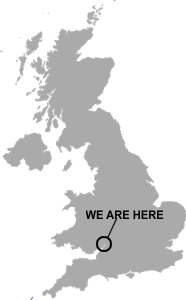As lockdown is loosened a little further this weekend, we are starting to see more businesses re-open and staff return to the workplace. The Government has released guidance for which businesses are and are not allowed to open and has published guidance for the safety measures that must be put in place for a variety of working environments. You’ll find links to this information and more on the Government Links page of our website under the Covid-19 section.
As workers return to the workplace we need to remember our duty as employers to provide a safe and acceptable working environment for our employees to carry out their duties. But, as far as Covid-19 is concerned, implementing the Government guidance is just the start.
With such a deadly and transmittable disease to defeat, any relaxation of or failure to uphold the measures that we must put in place could have significant consequences. Not only for staff members catching the virus, but, should the worst happen, there is the potential for a case of corporate manslaughter for negligent directors.
Since the onset of coronavirus, there has been much hype that we are all in this together and that we must all play our part; it’s a good message and remains the case. However, once we are back in the workplace, there will be some responsibilities that will need to be “owned” to ensure that the measures we have initiated are upheld.
Just as we expect other health and safety procedures to be adhered to in normal operations, so should we expect the same of those put in place to manage coronavirus risks. If a builder turned up to work on site without a hard hat, he or she wouldn’t be allowed to work; and it would be the site manager’s job to enforce this. We must take the same attitude with our coronavirus safety.
As you undertake risk assessments and take steps within your business, consider your chain of responsibility and accountability. Individuals will be responsible for their own actions, but it may be someone higher up the chain of command that allows a standard to drop or let’s someone “get away with it” every now and then. There can be no excuses and as you implement measures you should also make it clear what the consequences for failing to adhere to them will be, probably disciplinary action.
We have mentioned in the past that Section 44 of the Employment Rights Act 1996 act allows employees to question the safety of the workplace and keep themselves removed from it if they deem that it puts them in danger. Stringent following of the Government guidelines will negate this but, again, only is they are fully and consistently enforced.
Finally, let’s also remember that the overriding Government guidance remains that if you are able to work from home then you should continue to do. Some employers might prefer to have staff where they can keep an eye on them but instructing staff to come back to work where it cannot be fully justified might be considered as skating on thin ice. Furthermore, should a mini outbreak occur forcing the place of work to be locked-down for even longer, any financial gain in having people back at work will be immediately reversed.
Planning a return to the workplace: is it essential, is it safe, is it mutually agreed? If the work can be done at home and the employee can work from home, the Government guidance is clear the employee should continue to work from home for the foreseeable future.
If the employee needs to return to work as the above isn’t possible then we recommend that a return to the work/workplace assessment is undertaken. If you would like access to these documents please contact us.
We’re continuing to offer advice about all aspects of HR and Employment Law, including those affected by Covid-19. Call us for more information on 01452 331331 or e-mail This email address is being protected from spambots. You need JavaScript enabled to view it.



